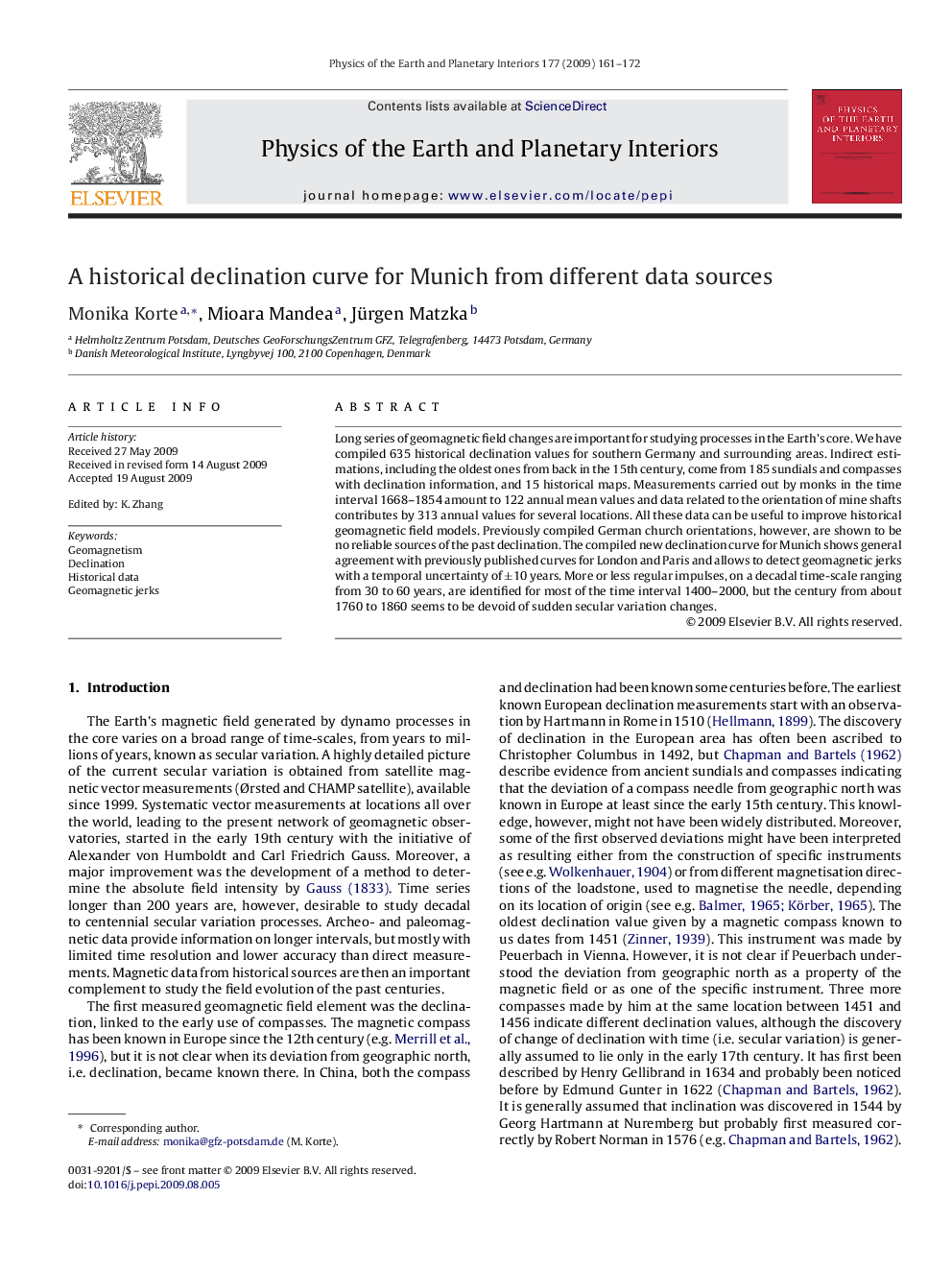| Article ID | Journal | Published Year | Pages | File Type |
|---|---|---|---|---|
| 4742343 | Physics of the Earth and Planetary Interiors | 2009 | 12 Pages |
Long series of geomagnetic field changes are important for studying processes in the Earth’s core. We have compiled 635 historical declination values for southern Germany and surrounding areas. Indirect estimations, including the oldest ones from back in the 15th century, come from 185 sundials and compasses with declination information, and 15 historical maps. Measurements carried out by monks in the time interval 1668–1854 amount to 122 annual mean values and data related to the orientation of mine shafts contributes by 313 annual values for several locations. All these data can be useful to improve historical geomagnetic field models. Previously compiled German church orientations, however, are shown to be no reliable sources of the past declination. The compiled new declination curve for Munich shows general agreement with previously published curves for London and Paris and allows to detect geomagnetic jerks with a temporal uncertainty of ±10±10 years. More or less regular impulses, on a decadal time-scale ranging from 30 to 60 years, are identified for most of the time interval 1400–2000, but the century from about 1760 to 1860 seems to be devoid of sudden secular variation changes.
